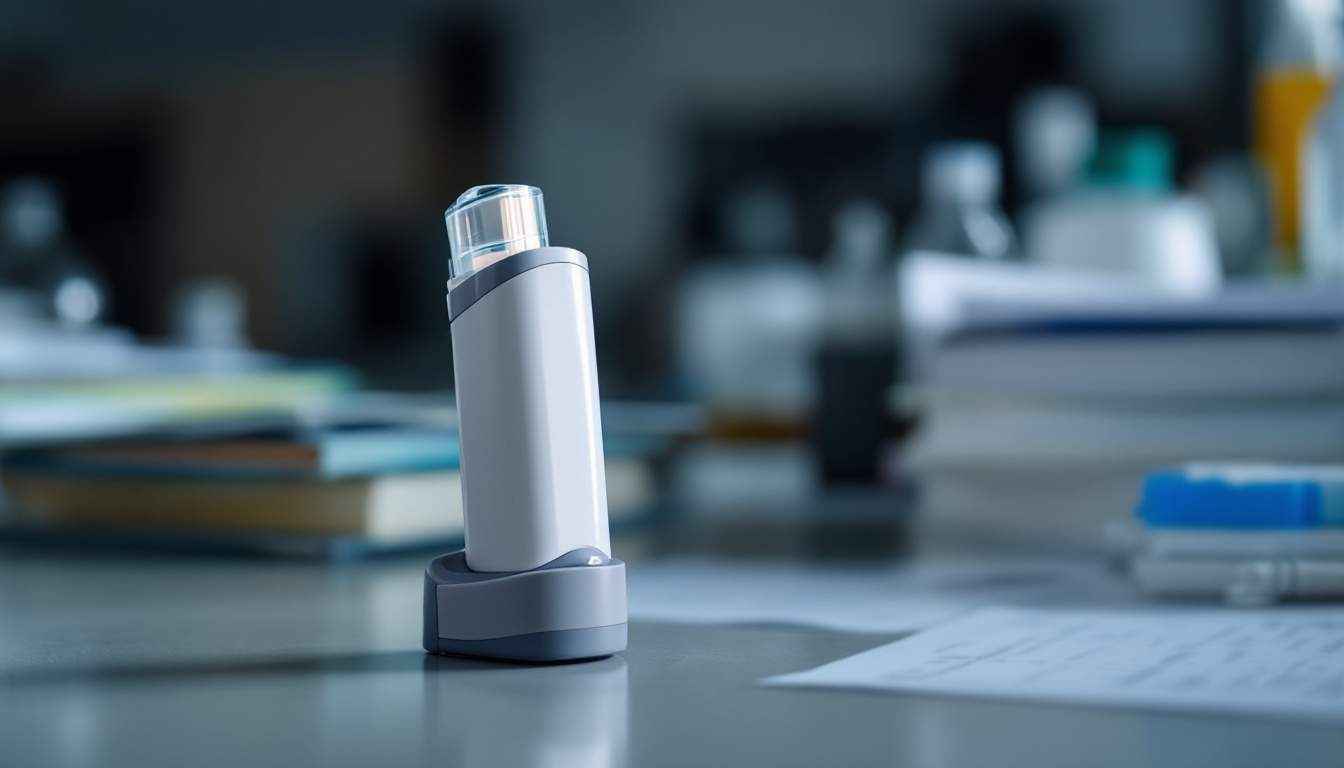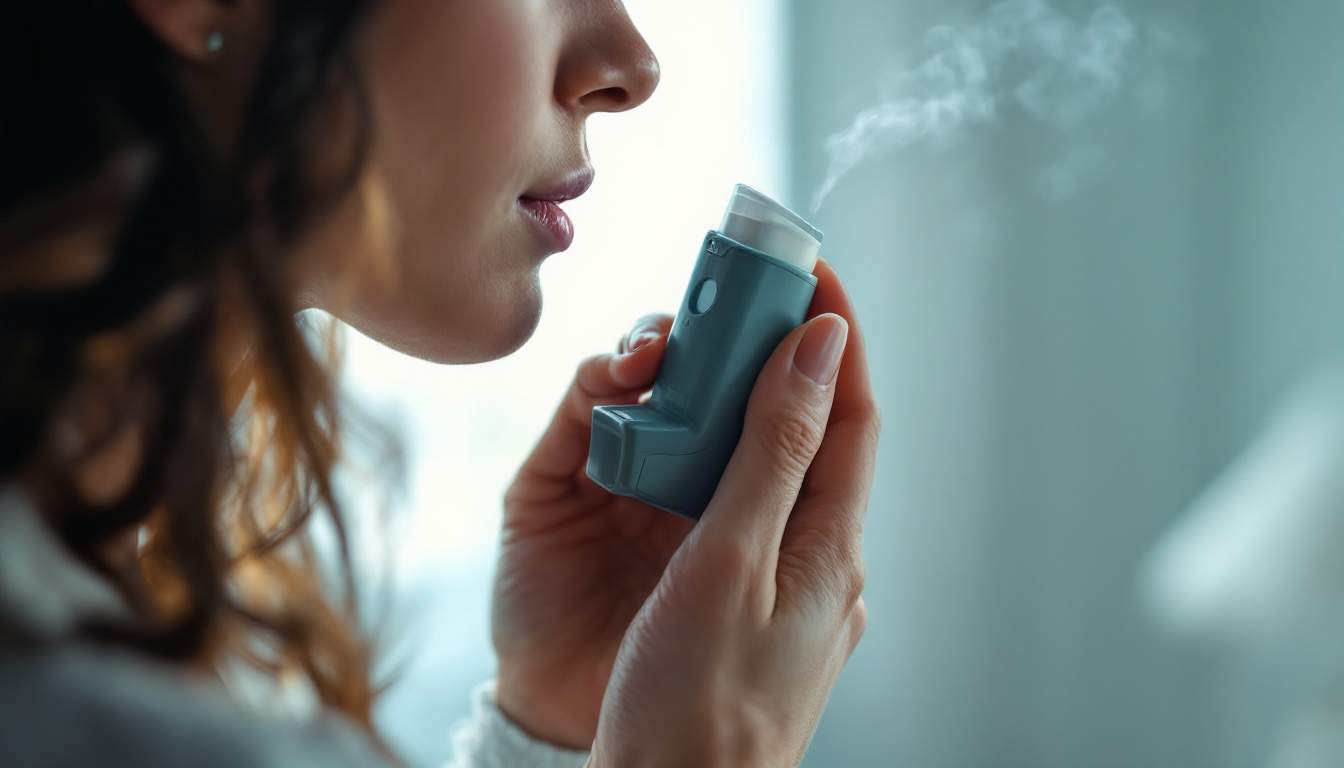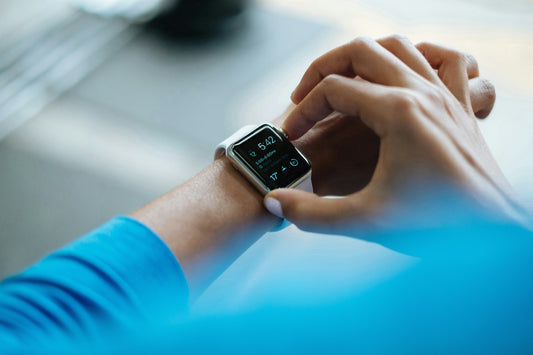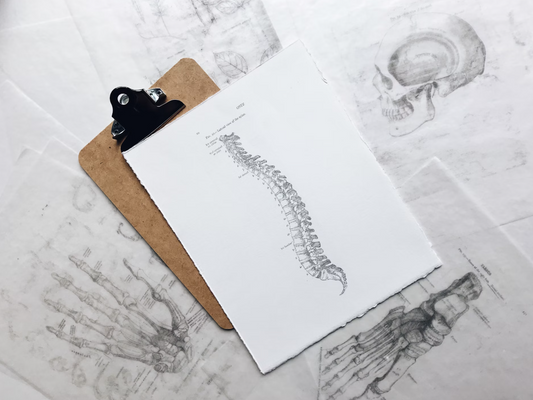Glossary: What is an Inhaler
An inhaler is a device that delivers medication directly to the lungs in a manner designed to alleviate symptoms associated with respiratory conditions. The convenience and portability of inhalers have made them one of the most popular methods for managing conditions like asthma and chronic obstructive pulmonary disease (COPD). This article aims to demystify inhalers, exploring their purpose, functionality, and usage.
Understanding the Basics of Inhalers
To grasp the significance of inhalers, it's essential to understand their basic components and functions. These devices are designed to combat issues like shortness of breath, wheezing, and other discomforts linked with respiratory ailments. Let's break down what inhalers are all about.
Definition and Purpose of Inhalers
Inhalers are handheld devices that enable individuals to inhale medications directly into their lungs, where they can work quickly and effectively. This method of delivery is especially useful for those who suffer from conditions affecting the airways. The primary purpose of an inhaler is to provide immediate relief during an asthma attack or to maintain long-term control over respiratory symptoms.
By bypassing the digestive system, inhalers allow medications to enter the bloodstream almost instantaneously, making them crucial in emergency situations. Inhalers can contain both fast-acting bronchodilators for quick relief and corticosteroids for longer-term inflammation control. Additionally, the ability to deliver medication directly to the lungs minimizes systemic side effects, making inhalers a preferred choice for many patients managing chronic respiratory conditions.
Different Types of Inhalers
There are several types of inhalers, each with specific features and uses. The main categories include metered-dose inhalers (MDIs), dry powder inhalers (DPIs), and nebulizers:
- Metered-Dose Inhalers (MDIs): These devices release a pre-measured dose of medication when the user presses down on the canister. They are typically used in emergencies and require a proper inhalation technique for effectiveness. MDIs often come with a counter to track doses, ensuring users know when to refill their medication.
- Dry Powder Inhalers (DPIs): These inhalers contain powdered medication and require the user to inhale forcefully to receive the dose. They are often preferred due to their easier usage and lack of propellants. DPIs are also generally more portable, making them convenient for on-the-go use.
- Nebulizers: Unlike the previous types, nebulizers convert liquid medication into a fine mist that can be inhaled through a mask or mouthpiece. They are suitable for those who may have difficulty using traditional inhalers, such as young children or individuals with severe respiratory distress.
The various types of inhalers cater to different patient needs, making it essential to understand which type is prescribed for specific conditions. Each inhaler type also requires specific maintenance and cleaning protocols to ensure proper functioning and hygiene.
Key Components of an Inhaler
Regardless of the type, inhalers have several key components. These often include:
- Canister: Contains the medication in aerosol form.
- Actuator: The part you press to release medication.
- Mouthpiece: The part where the user inhales the medication.
- Spacer (optional): A device that attaches to the inhaler, allowing for more effective medication delivery.
Understanding these components helps users become familiar with their inhalers and ensures they can use them effectively. Additionally, knowing how to properly clean and maintain these components can prolong the life of the inhaler and ensure that the medication is delivered efficiently. Regular checks for wear and tear, particularly on the mouthpiece and actuator, are also vital to ensure optimal performance and to prevent any potential blockages that could hinder medication delivery.
The Science Behind Inhalers
The technology behind inhalers involves a combination of scientific principles aimed at delivering medication efficiently. This section will delve into how inhalers function and the role of medication in their effectiveness.

How Inhalers Work
When the medication is released from an inhaler, it travels through the airways and reaches the lungs quickly. The active ingredients in the medication are designed to relax and open the airways, making it easier for individuals to breathe. In many inhalers, the propellant helps to deliver the medication deep into the lungs.
Once inhaled, the tiny particles of medication coat the bronchial tubes, making it possible for the medication to work effectively in reducing inflammation and relieving constriction. It’s crucial for users to use proper inhalation techniques to maximize the amount of medication delivered to the lungs. For instance, a slow and deep inhalation can help ensure that the particles are inhaled deeply into the lung tissue, while a quick inhalation might not allow for optimal absorption. Additionally, some inhalers are equipped with dose counters, which help users keep track of how many doses remain, ensuring they never run out unexpectedly.
The Role of Medication in Inhalers
The effectiveness of an inhaler hinges on the medication it dispenses. Common categories of medication found in inhalers include:
- Bronchodilators: These are medications that help relax and open the airways. They are typically classified as short-acting or long-acting, depending on their duration of impact.
- Corticosteroids: These medications are used to reduce inflammation in the airways, helping to control chronic symptoms and prevent attacks. They are generally used for long-term management.
- Combination Inhalers: These include both bronchodilators and corticosteroids, providing comprehensive relief.
Understanding the medication helps users to be aware of its purpose and foretells potential benefits regarding their health management. Moreover, recent advancements in inhaler technology have led to the development of smart inhalers that connect to mobile applications. These devices can track usage patterns, remind users to take their medication, and even provide feedback on inhalation technique, which can significantly improve adherence to treatment plans. This integration of technology not only empowers patients but also allows healthcare providers to monitor their patients' adherence and make informed decisions about their treatment regimens.
Using an Inhaler Correctly
While having an inhaler is crucial for managing respiratory conditions, knowing how to use it correctly is equally important. Proper usage ensures that the medication is delivered efficiently and can significantly improve users’ quality of life. Understanding the nuances of inhaler techniques can empower users to take control of their respiratory health, leading to fewer exacerbations and a more active lifestyle.

Step-by-Step Guide to Using Inhalers
Here’s a simple guide to using a metered-dose inhaler effectively:
- Remove the cap from the inhaler and shake it well.
- Hold the inhaler upright and exhale completely to empty your lungs.
- Place the mouthpiece between your lips and create a seal around it.
- As you start to inhale deeply, press down on the inhaler to release the medication.
- Continue to inhale deeply and slowly for about 3 to 5 seconds.
- Hold your breath for about 10 seconds, or as long as comfortable, to allow the medication to settle.
- If you need another puff, wait for about 30 seconds and repeat the process.
For DPIs and nebulizers, the steps can vary, so it’s essential to read the instructions that come with each device. Additionally, practicing in front of a mirror can help users ensure they are following the steps correctly, as visual feedback can be incredibly beneficial. Regularly reviewing inhaler techniques with a healthcare provider can also reinforce good habits and address any concerns that may arise over time.
Common Mistakes in Inhaler Usage
Even with the best intentions, users can make mistakes that compromise the effectiveness of their inhalers. Common errors include:
- Not shaking the inhaler before use, which can prevent proper mixing of the medication.
- Failing to exhale fully before inhaling, resulting in inadequate intake of the medication.
- Not holding the breath long enough after inhalation, which limits the medication absorption.
Avoiding these pitfalls can enhance the benefits derived from using inhalers effectively. Furthermore, it’s important to be aware of the expiration date of the inhaler, as using expired medication can lead to suboptimal treatment outcomes. Users should also familiarize themselves with the specific type of inhaler they have, as some may require a different technique or additional accessories, such as a spacer, to optimize medication delivery. Keeping track of the number of doses left in the inhaler can prevent running out unexpectedly, ensuring that users are always prepared to manage their condition.
Safety Measures and Precautions
While inhalers are generally safe, understanding when to use them and being aware of potential side effects is vital for optimal health.
When to Use an Inhaler
An inhaler should be used as prescribed by a healthcare professional. It's crucial to recognize the signs of an asthma attack or exacerbation of chronic obstructive pulmonary disease (COPD), which may include intense wheezing, chest tightness, or significant trouble breathing.
Additionally, maintenance inhalers should be used daily, even when symptoms are not present, to help keep the airways clear and reduce inflammation. It is also important to monitor environmental triggers that may exacerbate symptoms, such as allergens, smoke, or extreme weather conditions. Keeping a symptom diary can be beneficial, as it allows individuals to track their condition and identify patterns that may warrant adjustments in their inhaler usage or overall management plan.
Potential Side Effects of Inhalers
While inhalers can be life-saving, they are not without side effects. Some common side effects associated with inhaler use include:
- Increased heart rate or palpitations, particularly with bronchodilators.
- Oral thrush or candidiasis, especially with corticosteroid inhalers due to the effect on the oral cavity.
- Local irritation in the throat or a cough following inhalation.
Users should discuss any concerns or side effects with their healthcare provider to determine the best course of action. It's also essential to maintain proper inhaler technique to minimize side effects and maximize the medication's effectiveness. For instance, using a spacer device can help deliver medication more efficiently to the lungs and reduce the risk of oral thrush. Furthermore, regular follow-ups with a healthcare provider can ensure that the inhaler regimen remains appropriate and effective, allowing for timely adjustments based on the patient's evolving needs.
Frequently Asked Questions about Inhalers
As we wrap up, let’s address some frequently asked questions about inhalers to clarify common doubts prevalent among users.
Can Inhalers be Used for Other Conditions?
In addition to asthma and COPD, inhalers can be prescribed for other respiratory conditions, including bronchitis and cystic fibrosis. Some inhalers may even be used in the management of allergies that cause respiratory symptoms. For instance, individuals suffering from allergic rhinitis may benefit from inhaled corticosteroids to reduce inflammation in the airways, thereby alleviating symptoms such as wheezing and shortness of breath.
However, it's crucial that inhalers are used under the guidance of a healthcare professional to ensure safety and efficacy. Misuse or over-reliance on inhalers can lead to complications, including increased side effects or diminished effectiveness over time. Therefore, it is essential for patients to have open discussions with their healthcare providers about their specific conditions and the appropriate use of inhalers.
What to Do if an Inhaler Doesn't Work?
If an inhaler does not seem to provide relief, it is essential to take the following steps:
- Double-check the usage technique to ensure it is being used correctly.
- Administer a second dose if advised by a healthcare professional.
- If symptoms persist, seek immediate medical attention, as this may indicate a severe exacerbation of the condition.
It’s always better to err on the side of caution when dealing with respiratory issues, as timely intervention can be critically important. Additionally, users should familiarize themselves with their inhaler’s expiration date and storage conditions, as improper handling can render the medication ineffective. Keeping a record of symptoms and medication usage can also provide valuable insights for healthcare providers during follow-up visits, ensuring that any necessary adjustments to the treatment plan can be made promptly.
In conclusion, understanding the functionality and proper use of inhalers can empower users to manage their respiratory conditions effectively. Regular consultations with a healthcare provider ensure optimal medication management tailored to individual health needs.
If you're looking to take your respiratory health management to the next level, Alveo's innovative Continuous Respiratory Wearable is the companion you need. With Alveo, you can gain invaluable insights into your breath patterns, understand how the environment affects your breathing, and access personalized breathing routines tailored to your lung capacity. Experience the lightness and comfort of real-time respiratory monitoring and alerts that keep you informed and in control. Don't miss out on the opportunity to be among the first to benefit from this cutting-edge technology. Sign up on our waiting list today and breathe easier with Alveo.




